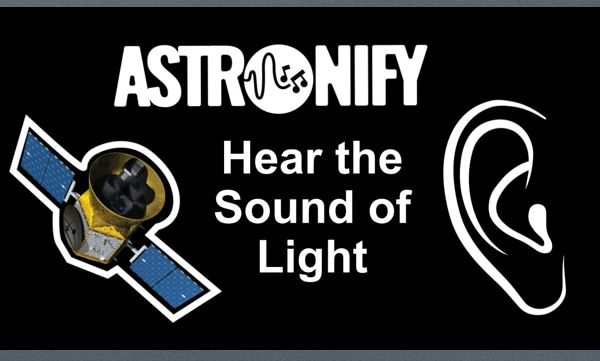
The world around us is a symphony of sensations, but our senses often limit our perception. We see vibrant colors, feel textures, smell aromas, taste flavors, and hear melodies. Yet, there’s a hidden dimension to our reality, a realm where light itself can produce sound. This article delves into the fascinating field of “light acoustics,” exploring how scientists harness cutting-edge technology to convert light waves into audible frequencies, revealing a previously unheard dimension of our visual world.
This exploration will begin by explaining the fundamental principles behind light acoustics and how it works. We’ll then delve into the intricate process of converting light to sound, examining the specific technologies employed. Next, we’ll journey into the realm of high-frequency sounds from light, uncovering the unique sonic landscapes generated by this phenomenon. We’ll also explore the diverse applications of light acoustics across various fields, highlighting its potential impact on our future. Finally, we’ll conclude with a glimpse into the exciting possibilities that lie ahead for this burgeoning field.
Light Acoustics Explained
Light acoustics is a relatively new and rapidly evolving field that explores the intersection of two seemingly disparate phenomena: light and sound. While traditionally viewed as distinct entities, these forces share fundamental similarities at their core. Both light and sound are forms of energy that travel in waves, oscillating through space and time.
The key difference lies in their frequency ranges. Light encompasses a vast spectrum of electromagnetic radiation, from low-frequency radio waves to high-frequency gamma rays. Sound, on the other hand, refers to mechanical vibrations that propagate through a medium, typically air. These vibrations create pressure waves that our ears perceive as sound.
Light acoustics seeks to bridge this gap by demonstrating how light’s energy can be transformed into audible frequencies. This conversion process relies on sophisticated technologies that exploit the inherent properties of both light and sound waves.
Converting Light to Sound
The heart of light acoustics lies in the intricate process of converting light waves into audible sound. Several innovative techniques have been developed to achieve this feat, each with its unique approach:
1. Photoacoustic Effect: This method leverages the photoacoustic effect, a phenomenon where light absorption by a material generates heat, leading to thermal expansion and subsequent acoustic wave generation. By focusing laser beams onto specific materials, researchers can induce these vibrations, which are then amplified and converted into audible sound.
2. Optoelectronic Conversion: Another approach involves utilizing optoelectronic devices, such as photodiodes or solar cells, to convert light energy directly into electrical signals. These signals can then be processed and amplified to produce sound waves. This method offers high sensitivity and precision, allowing for the detection of even faint light sources.
3. Nonlinear Optics: This technique employs nonlinear optical materials that exhibit unique responses to intense light pulses. When subjected to specific laser frequencies, these materials generate new wavelengths of light, including those within the audible range. These “generated” sound waves can then be captured and amplified.
High-Frequency Sounds of Light
The high-frequency sounds from light produced through these techniques often fall beyond the range of human hearing. These ultrasonic frequencies carry valuable information about the nature of light itself, revealing hidden patterns and characteristics that are invisible to our eyes.
By analyzing these sonic landscapes, researchers can gain insights into the properties of materials, the behavior of light in different environments, and even the fundamental nature of quantum mechanics. The ability to “hear” light opens up a new dimension of scientific exploration, allowing us to perceive and understand the universe in ways previously unimaginable.
Applications of Light Acoustics
The potential applications of light acoustics are vast and diverse, spanning numerous fields:
1. Medical Imaging: Light acoustics can be used to create high-resolution images of internal tissues and organs by analyzing the sound waves generated by different types of cells and structures. This non-invasive technique offers a promising alternative to traditional imaging methods like X-rays and MRI.
2. Material Science: By studying the high-frequency sounds from light emitted by materials, researchers can gain insights into their composition, structure, and properties. This has applications in fields such as nanotechnology, semiconductor development, and materials engineering.
3. Communication Technology: Light acoustics could pave the way for novel communication systems that utilize both light and sound waves. These systems could offer faster data transmission rates, increased security, and improved efficiency compared to traditional methods.
4. Art and Music: The unique sonic landscapes generated by light acoustics have opened up new possibilities in artistic expression. Composers and musicians are exploring the use of light-based instruments and soundscapes to create innovative and immersive experiences.
The Future of Light Acoustics
The field of light acoustics is still in its infancy, but its potential for innovation and discovery is immense. As research progresses, we can expect to see even more sophisticated technologies emerge, pushing the boundaries of our understanding of light and sound.
Future developments may include:
- Miniaturization: Creating smaller and more portable light acoustic devices for wider accessibility and applications.
- Integration with Artificial Intelligence: Combining light acoustics with AI algorithms to enhance data analysis, pattern recognition, and decision-making capabilities.
- New Applications: Exploring novel applications in fields such as environmental monitoring, biomedicine, and space exploration.
Conclusion
Light acoustics represents a fascinating convergence of two fundamental forces of nature, revealing a hidden dimension of our visual world through the power of sound. By harnessing cutting-edge technologies to convert light waves into audible frequencies, scientists are unlocking new insights into the properties of light, materials, and even the universe itself. As this field continues to evolve, we can anticipate groundbreaking discoveries and transformative applications that will reshape our understanding of the world around us.
